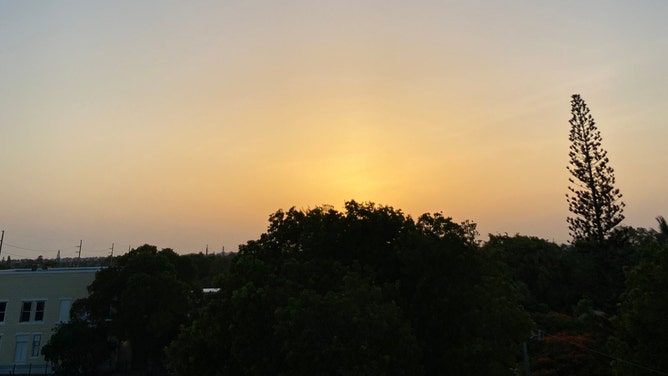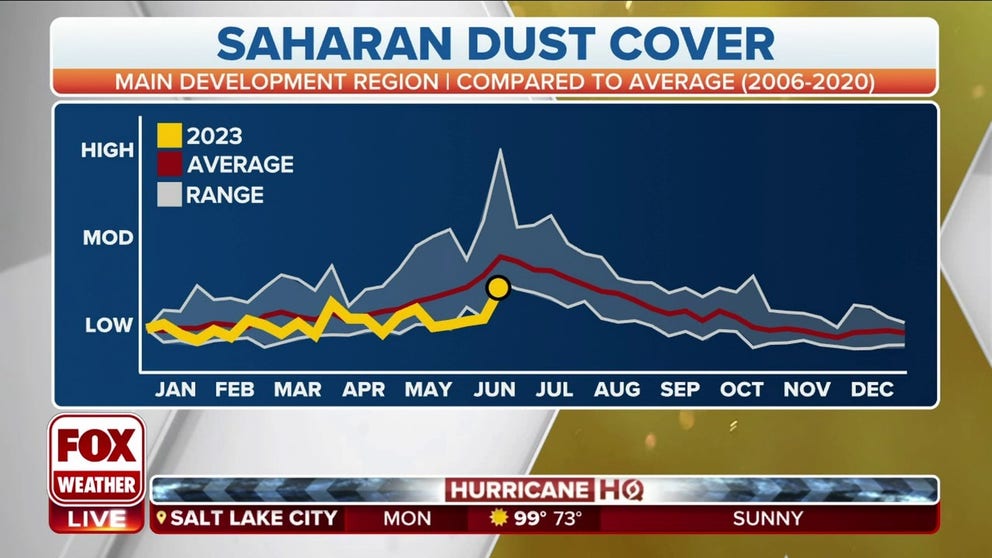Plumes of Saharan dust could impact air quality, produce dramatic sunsets over Florida
The Saharan Air Layer (SAL) from Africa can reduce tropical activity across the Atlantic Basin. NOAA says the base of a dust plume is typically a mile above Earth’s surface and can be a couple of miles thick.
Firs Saharan dust plume arrives in Florida causing colorful sunrises, sunsets
The first plume of the Saharan dust season arrived in Florida on Sunday and a second plume is set to arrive later this week. The dust can create colorful sunsets and also air quality concerns.
The first plume of Saharan dust to impact the Southeast during the summer has the potential to influence air quality and make for some dramatic sunrise and sunset colors as we begin the new workweek.
This is common during the summer months, and the FOX Forecast Center says that as the dust pushes off Africa and makes its way across the Atlantic Ocean, it will have traveled more than 5,000 miles before influencing the weather in the U.S.

A Saharan Air Layer (SAL) plume is moving over the Florida Keys, the National Weather Service in Key West said. Groups that are sensitive may experience minor health impacts.
(NWS Key West)
More than 180 million tons of dust leave Africa annually, and the extent of the dust plume is highly dependent on how much rain falls across northern Africa.
This first plume of dust arrived in Florida on Sunday and will stick around through at least the first part of the week.
5 THINGS TO KNOW ABOUT THE SAHARAN DUST PLUME

(FOX Weather)
The overall concentration will be low, the FOX Forecast Center says, and the dust is typically well above the surface, unlike the thick plumes of wildfire smoke that have been filtering into the U.S. from Canada.
So while the effects on air quality are minimal, the dust could produce some dramatically colorful sunrises and sunsets.
The FOX Forecast Center says that later in the week, a second plume of dust is expected to impact the Southeast and could be thick enough and close enough to the ground to briefly affect air quality, especially for sensitive groups.
"In dusty air, it's literally 50% less in terms of the moisture content that it holds than the average air over the Atlantic," FOX Weather meteorologist Michael Estime said.
In South Florida, the hazy sunset on Sunday was because of the dust particles arriving from 5,000 miles away.
Saharan dust can also suppress Florida's typical summer thunderstorm pattern.
Dust can play a role in the temperature as well.
FOX Weather meteorologist Stephen Morgan said dust can act as a blanket, trapping the heat near the surface.
According to WebMD, eye, nose and throat irritations are possible when there are outbreaks of fine dust particles in the air.
During active Saharan Air Layer (SAL) episodes, the Atlantic tropics are usually quiet as the dry air hinders tropical cyclone development and organization.
NOAA says the air surrounding the dust plume has 50% less moisture than the typical atmosphere, which means the presence of the SAL can be detrimental to cloud formation and thunderstorm activity.
